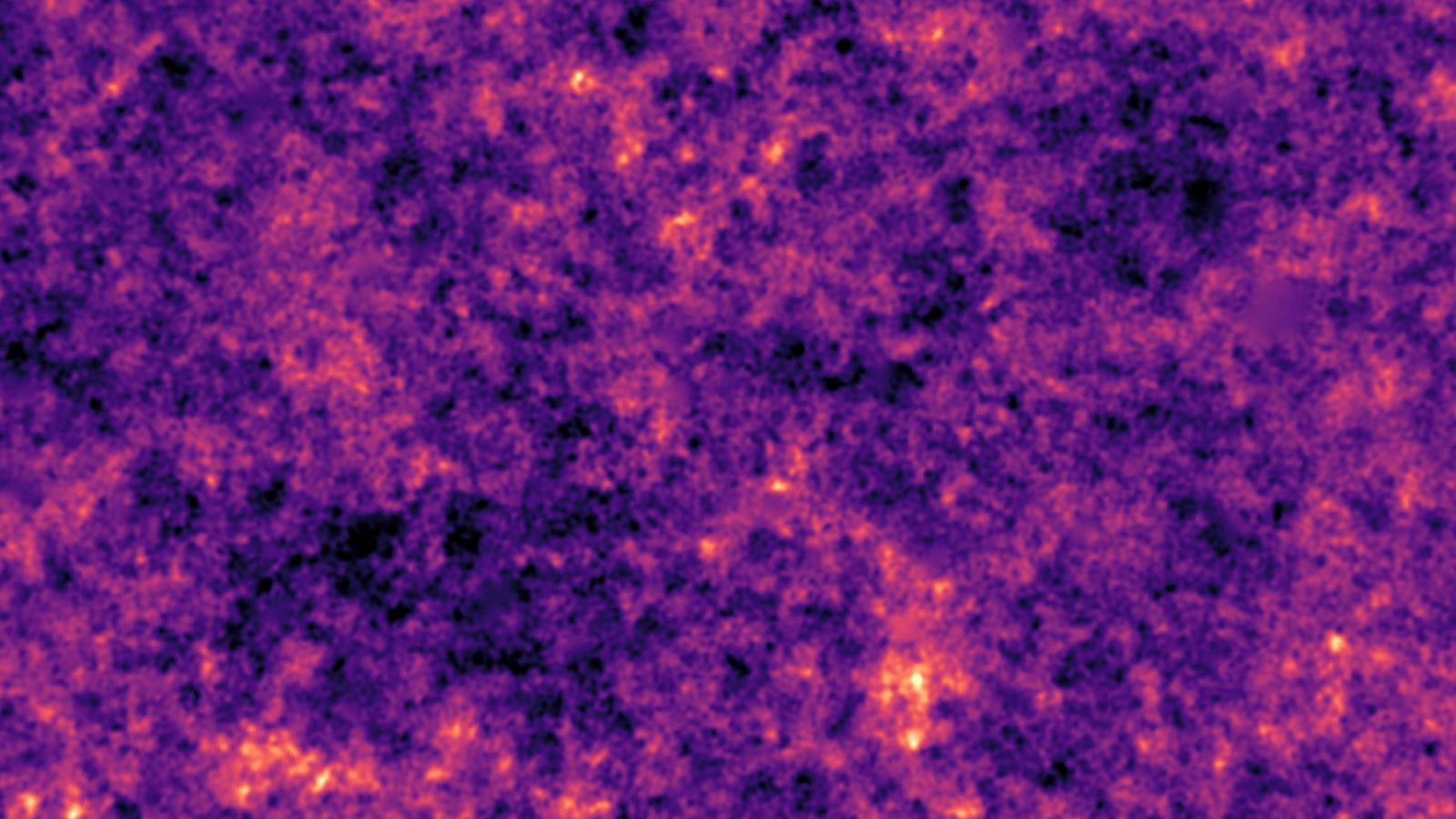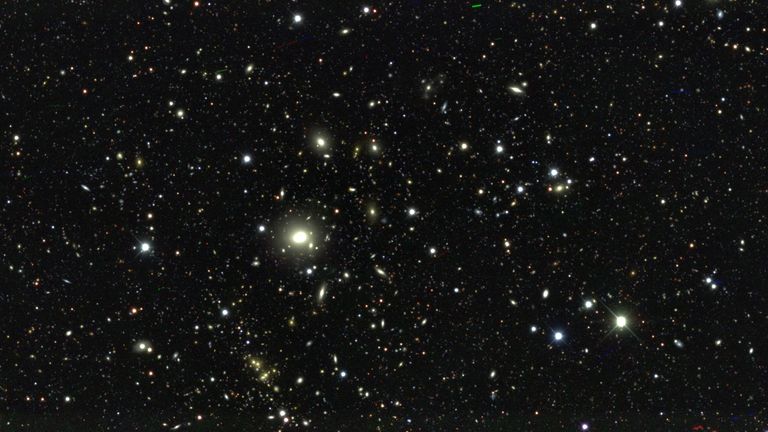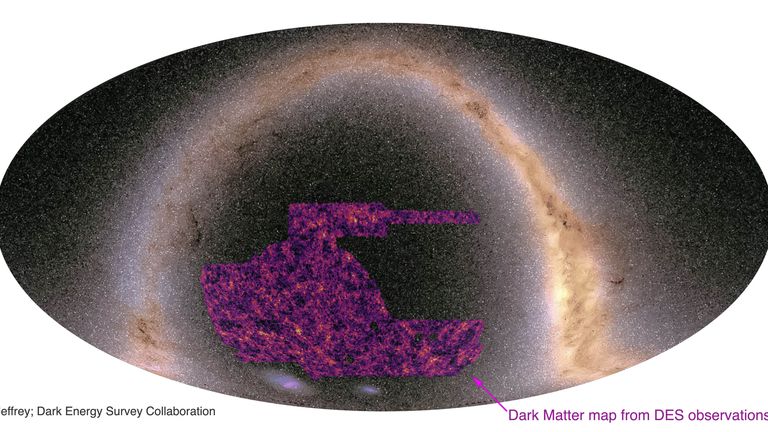The largest-ever map of the universe’s dark matter has been released.
Dark matter, which is unobservable from the Earth, is thought to make up around 80% of matter in the universe.
A team of scientists from the international Dark Energy Survey (DES) created the new map – which covers a quarter of the southern hemisphere’s sky.
They did it by looking at how light from far-away galaxies has been distorted on its way to Earth.
The presence of dark matter would bend the rays coming towards us.
Artificial intelligence analysed the data to create the map.
About 100 million galaxies were observed for the project. According to NASA, there are 100 billion stars in the Milky Way alone.
The DES team was led by researchers from University College London.
Dr Niall Jeffrey, from UCL’s physics and astronomy department, was one of the lead authors on the project.
He said: “Most of the matter in the universe is dark matter. It is a real wonder to get a glimpse of these vast, hidden structures across a large portion of the night sky.
“These structures are revealed using the distorted shapes of hundreds of millions of distant galaxies with photographs from the Dark Energy Camera in Chile.
“In our map, which mainly shows dark matter, we see a similar pattern as we do with visible matter only, a web-like structure with dense clumps of matter separated by large empty voids.
“Observing these cosmic-scale structures can help us to answer fundamental questions about the universe.”
Dark matter’s existence can be inferred from the way galaxies move – they stay together and those in clusters move faster than expected.
Another of the paper’s author’s, Professor Ofer Lahav, chairman of the DES UK consortium and also a member of the UCL Physics and Astronomy team said: “Visible galaxies form in the densest regions of dark matter.
“When we look at the night sky, we see the galaxy’s light but not the surrounding dark matter, like looking at the lights of a city at night.
“By calculating how gravity distorts light, a technique known as gravitational lensing, we get the whole picture, both visible and invisible matter.
“This brings us closer to understanding what the universe is made of and how it has evolved.
“It also shows the power of artificial intelligence methods to analyse one of the largest data sets in astronomy.”
Research from DES has supported the standard cosmological model of how the universe works.


